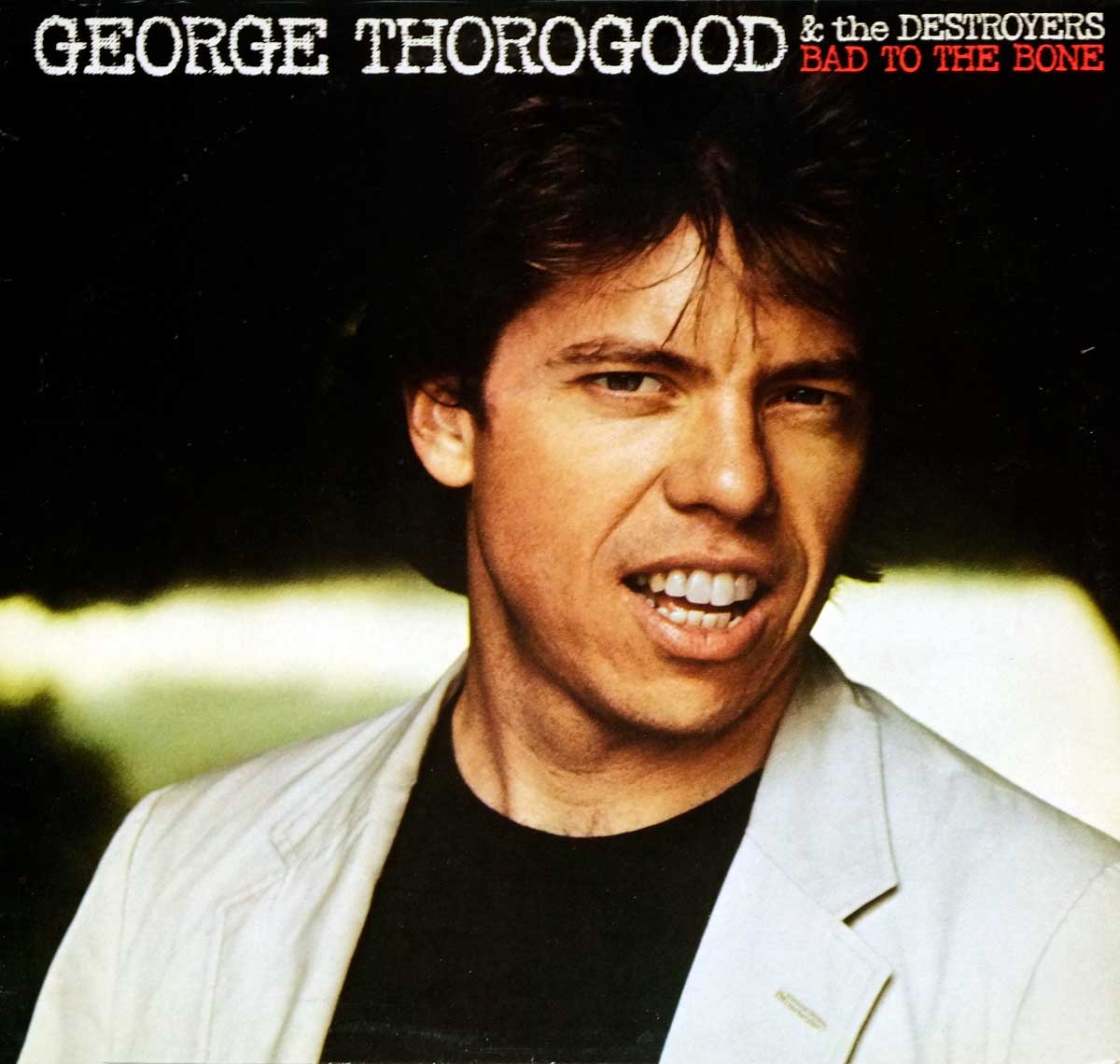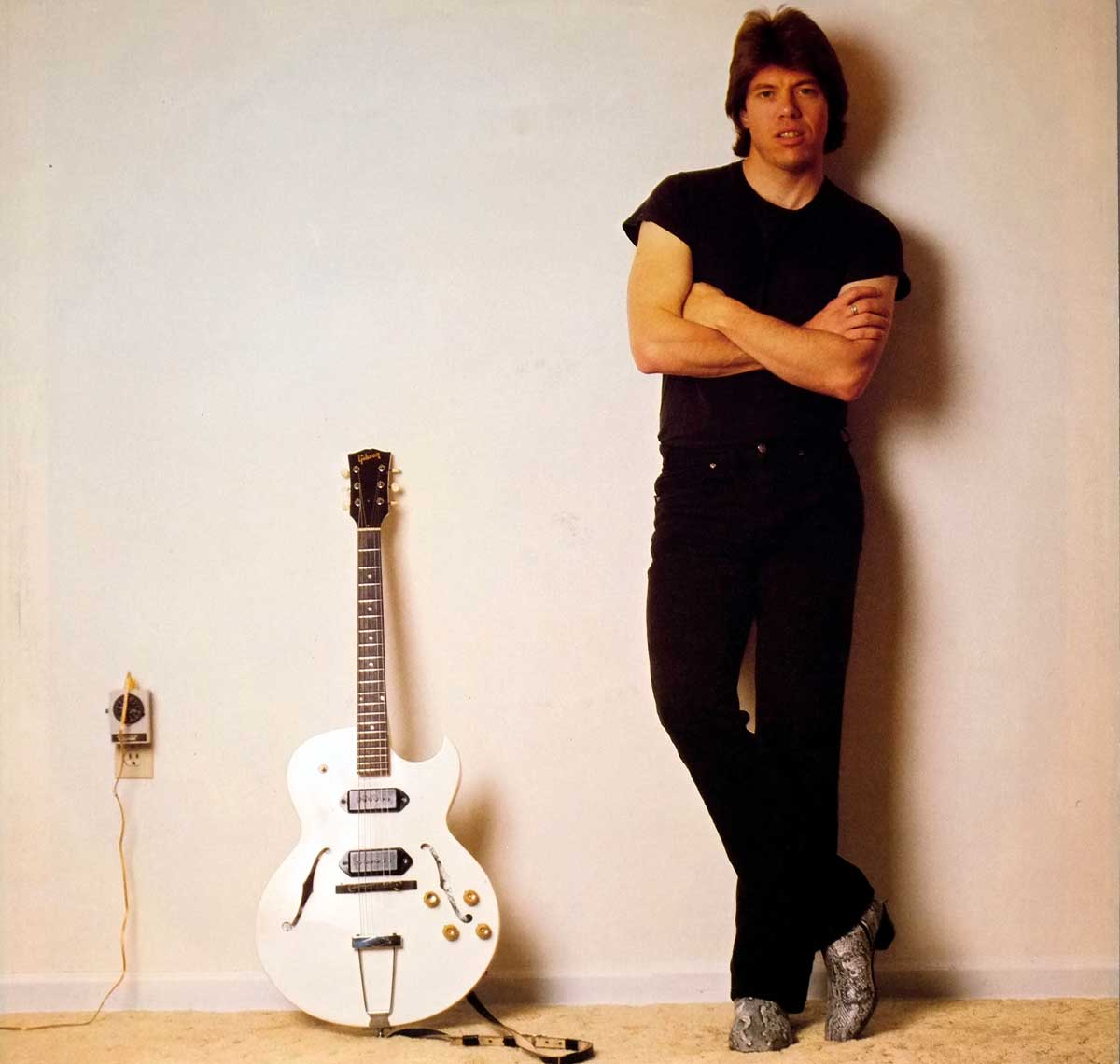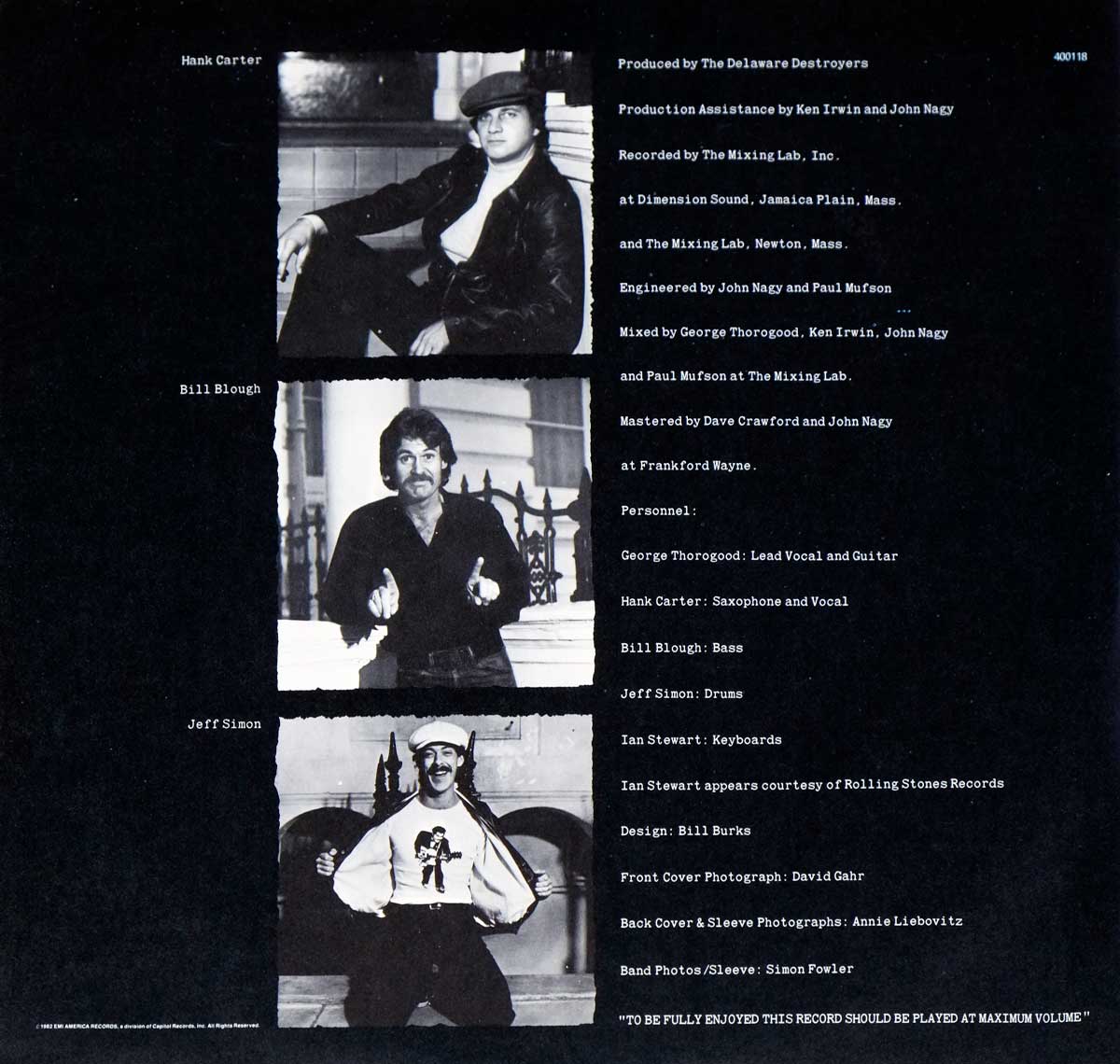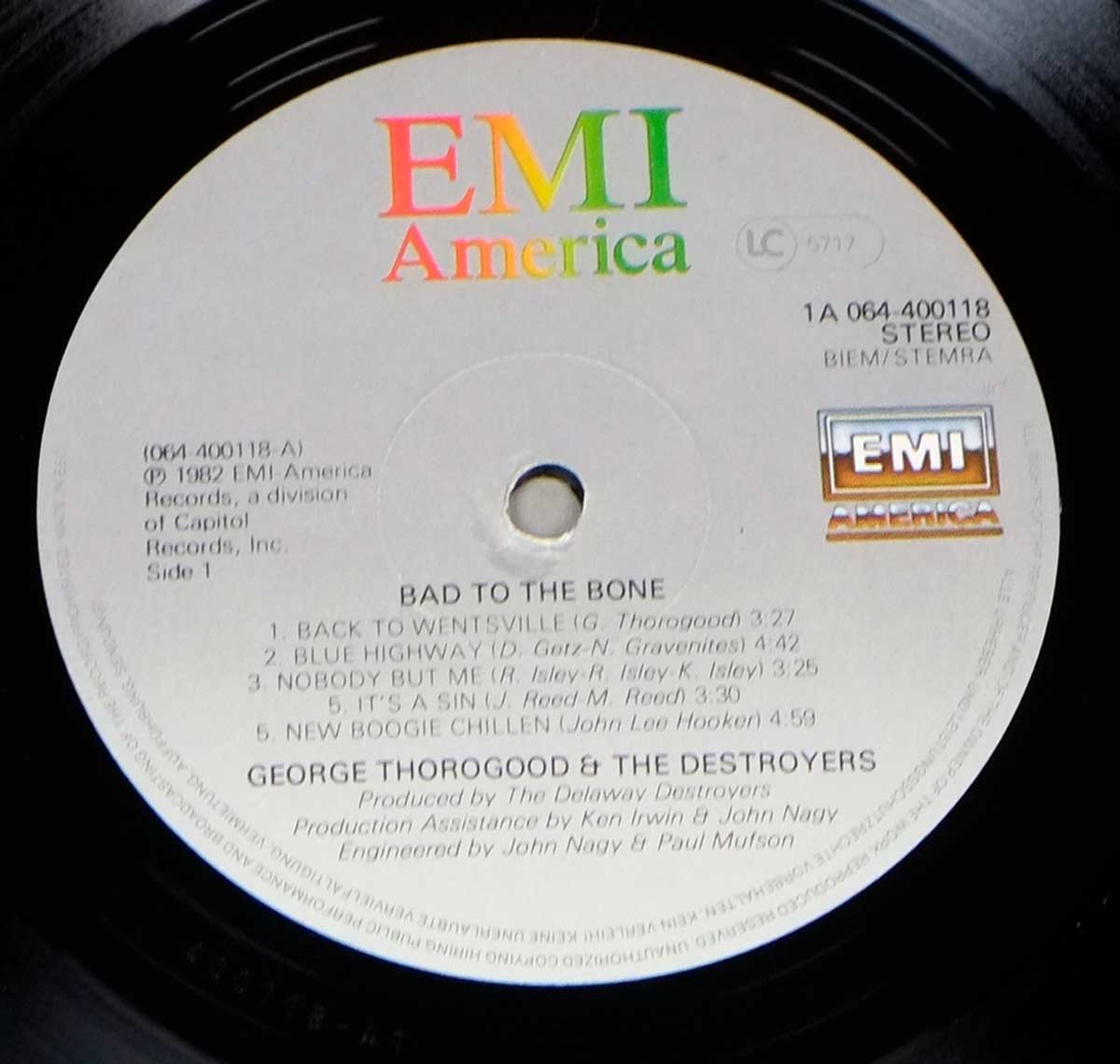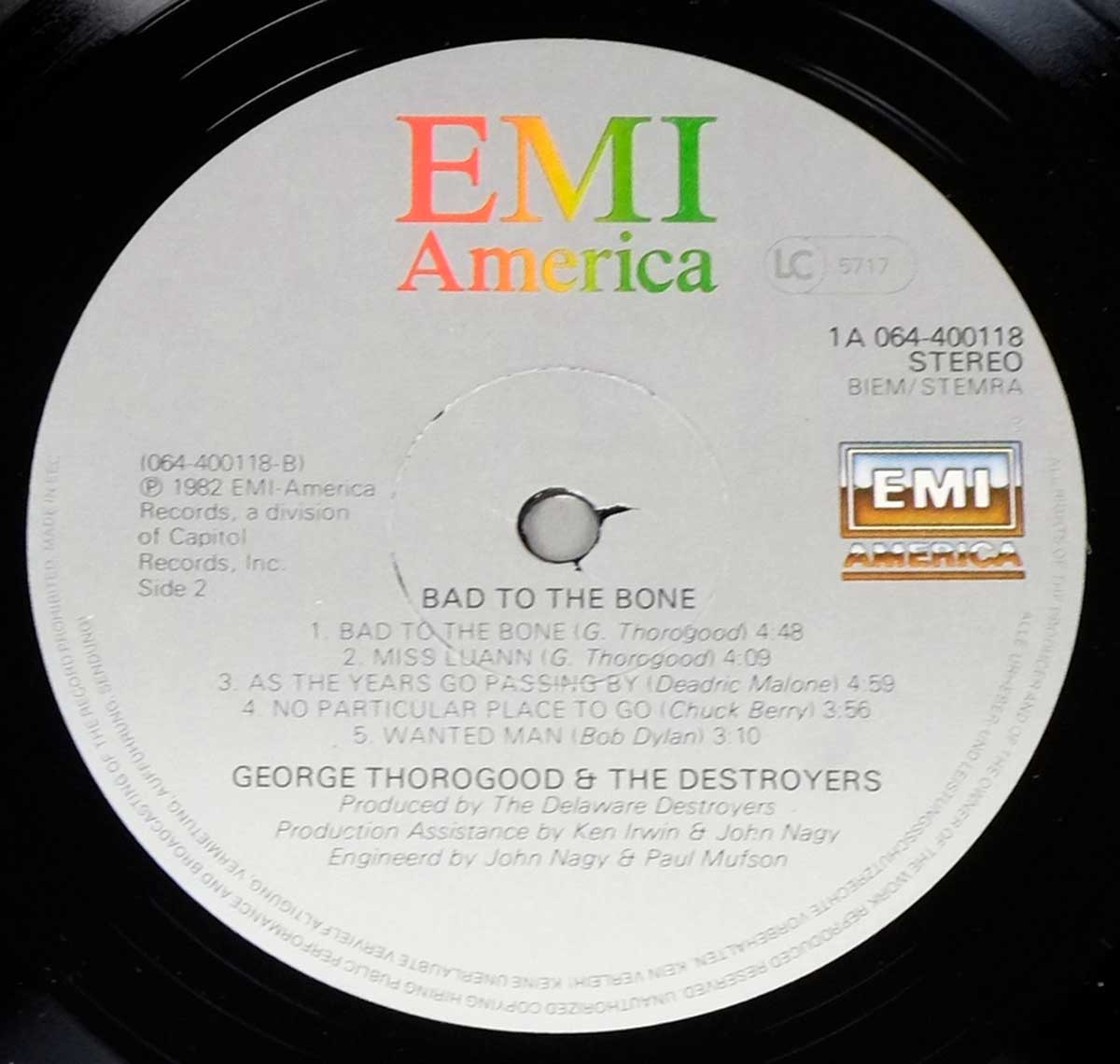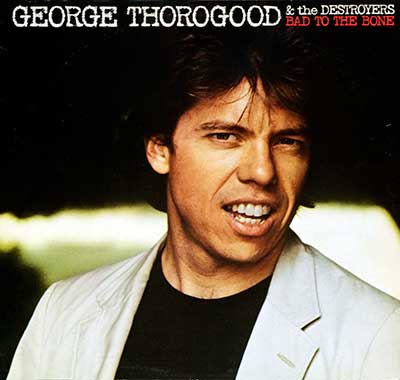GEORGE THOROGOOD & THE DESTROYERS – Bad to the Bone (1982) Album Description:
"Bad to the Bone" wasnÕt just a clever song title Ñ it was a mission statement, a declaration, and a barroom brawl wrapped in twelve inches of vinyl. Released in 1982 by EMI America Records, this fifth studio outing from George Thorogood & The Destroyers wasn't designed to innovate or elevate, but to kick the door in, slap the jukebox, and order another round before the dust settled.
Historical Context
By the time Bad to the Bone hit the shelves, the American rock landscape was shifting. MTV was in its infancy, new wave was gaining steam, and synthesizers were beginning to edge out Stratocasters. But Thorogood, that Delaware blues-rocker with a growl and a Gibson, wasn't buying in. He stood planted at the crossroads of Chess Records and Chuck Berry, pulling raw electric blues into the Reagan era like a man dragging a jukebox down Main Street.
Thorogood's earlier success had come with bar-band staples like ÒMove It On OverÓ and ÒWho Do You Love?ÓÑraw, sweaty tributes to the bluesmen who raised him musically. By Õ82, with four albums behind them, The Destroyers werenÕt trying to break the mold; they were trying to beat it with a baseball bat.
Musical Exploration
Musically, the album is a lean, swaggering blues-rock beast. The title track, driven by that infamous stop-time riff and ThorogoodÕs snarling vocal delivery, became an anthem Ñ a modern blues standard that never asked for permission. But dig deeper, and youÕll find nods to Bo Diddley, Elmore James, and Muddy Waters hiding in the tracklist like cigarette burns in a leather jacket.
Tracks like ÒBack to WentzvilleÓ and ÒNo Particular Place to GoÓ play like open-road sermons, while ÒWanted ManÓ takes a detour into darker, outlaw territory. The cover of Chuck BerryÕs classic ÒNo Particular Place to GoÓ might seem like nostalgia, but in ThorogoodÕs hands itÕs more like possession Ñ fast, loose, and grinning with menace.
Genre Identity
This is unapologetically blues rock Ñ big on baritone swagger, boogie rhythms, and slide-guitar slashes. But Thorogood was never a purist. He filtered the Delta through a Marshall stack, added some streetwise Jersey attitude, and laced it with the grit of a thousand roadhouses. It's blues for the working stiff, rock and roll for the pool-hall philosopher. If ClaptonÕs blues was an Oxford education, ThorogoodÕs was a high school fight in the parking lot behind a bowling alley.
Production & Studio Environment
The album was recorded at Dimension Sound Studios in Boston, Massachusetts Ñ a far cry from Muscle Shoals or Sun Studios, but no less electric. Producer Terry Manning brought a sharp edge to the mix, keeping the guitars hot and the vocals front and center. Manning, known for his work with Led Zeppelin and ZZ Top, understood how to harness a band's live-wire energy without sanding off the rough edges.
One of the most intriguing contributions came from Ian Stewart, the often-unsung Rolling Stones sideman, who lent his boogie-woogie piano chops to several tracks. His presence on the record is subtle but essential Ñ like a ghost of rock ÔnÕ roll past keeping time behind the bar.
Controversies and Criticism
While the title track became a mainstay in film, television, and advertising, some critics accused the album of being formulaic Ñ too many covers, not enough innovation. But Thorogood never claimed to be reinventing the wheel. He was too busy spinning it fast enough to leave tire marks on your soul.
There were grumblings from blues purists who saw ThorogoodÕs approach as bombastic, a carnival ride through sacred territory. But those complaints faded under the weight of his relentless touring, his dedication to the genre, and the plain fact that the man could sell out a venue on a Wednesday night with nothing but a bottle slide and a smirk.
